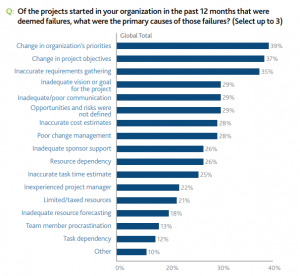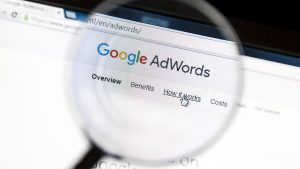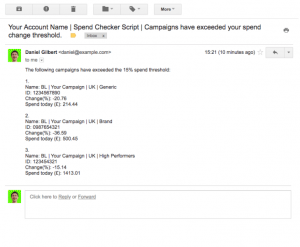
If your marketing is not serving the right message at the right time through the right channel to the right people, you are likely annoying your prospects and wasting your time. You must go beyond features and benefits and asking for the sale to providing real value. If your marketing can do that, it will help you build trust and credibility with your future customers.
When you know who your best customers are, how to engage with them and how to better serve them with your marketing content, it stands to reason that you’ll drive greater ROI from your efforts.
How do you figure out what your customers and prospects value? You ask them.
Here’s how to glean valuable insights from buyer interviews, as well as 10 top insights from buyer personas that can help you make big improvements to your marketing strategy.
1. Demographics
I remember building marketing strategies and allocating media budgets based solely on customer demographic information. The world of marketing has changed quite a bit since then, but accurate demographic information still holds value and forms the foundation of buyer personas.
Age, gender, income level, education and other related stats can provide worthwhile insights into the kinds of content and offers to create for your target audience.
Jim Joseph, Chief Integrated Marketing Officer of Cohn & Wolfe, notes, “You need to decide what demographics best represent your target customers before you can continue to develop your positioning statement. You have to know who they are before you can position your brand with them.”
2. Buy Cycle Stages and Buy Cycle Length
How does your customer expect you to interact with them at different stages of the buying cycle? How long does it take for them to go into buying mode, and when does it happen?
According to HubSpot, there are essentially three stages in the buying cycle:
- Awareness
- Consideration
- Purchase
According to David Skok, General Partner at Matrix Partners, “In the online world, we need to provide different paths through the website that are appropriate for each stage. It turns out that visitors will self-identify where they are in the buying cycle by the paths they take, provided you give them the option.”
Interviews can help you determine what information a lead needs at every stage to move down the sales funnel. Interviews also will help you glean information about ways you may be able to shorten the buy cycle.
3. Sales-Ready Triggers
Sale-ready triggers are closely tied to buy cycles. Matrix Partners’ Skok says, “A trigger is an event that causes a buyer to have a clear need, which usually converts into a sense of purpose and urgency in their buying process.”
We’ll say, for example, that you’re somewhat interested in buying a new golf club. This may not be an urgent need, but if you booked a two-week Florida vacation a month from now, this is an event that could trigger your desire to get the club sooner.
You’ll need to take a customized approach to triggers, as this will be different for every company.
4. Goals, Challenges, Pain Points, FAQs
What are your customers trying to achieve? What challenges and pain points are they experiencing? What questions do they ask you most often?
By homing in on these points, you can better serve your customer at each stage of the sales funnel. You can resonate with them by demonstrating a clear understanding of their primary pain points. Perhaps, most importantly, you can use this information to strategize content that will get you in front of your prospects in the early research stage of their buy cycle.
5. Content Strategy
You need to communicate with your audience in a way they can relate to. This means developing content that speaks to them in the language and tone they understand.
Talking to your audience gives you an opportunity to find out what they’re searching for, their challenges and what publications or blogs they find engaging.
“Without personas, you may only be guessing what content your audience wants, which means you are more likely to revert to creating content around what you know best (your products and company) instead of around the information your audience is actively seeking,” says Jodi Harris, Director of Editorial Content and Curation at Content Marketing Institute.
6. New Creative Marketing Tactics
Interviewing your customers could shed light on marketing ideas you haven’t even considered. This could be as simple as showing up in publications and blogs your customers are already reading, or a more sophisticated approach to remarketing and extending the lifetime value of a customer.
Here are some questions you can ask:
- What blogs, magazines or publications do you regularly read?
- What sites do you regularly use to shop online?
- Are you aware of any companies that are doing interesting marketing or advertising campaigns?
- Can you think of any ads that have really caught your attention lately? What was it?
7. Ad Distribution Channels
“With all of your buyer personas defined, you should… have a much better idea of who, how, and where you should be marketing to achieve the greatest level of success,” says Richard Lazazzera, Content Strategist at Shopify. “The demographic information of each persona will help you target your ads more effectively, and the psychographic information can help you write more engaging copy for each particular persona.”
In short, with the right information in hand, you’ll gain insights into what ad distribution channels to use and how to set the targeting to drive the best results.
8. SEO and Keyword Strategy
Learning more about the words and phrases your customers typed into search engines when they were looking for a solution to their goal, challenge or pain point allows you to create more effective content around searcher intent. This doesn’t mean just ranking for your terms, but also holding the attention of your website visitors for longer when they find your content.
An SEO and keyword strategy centered on your buyer persona leads to better ROI for your inbound strategy.
9. Testimonials
Interviewing your customers may lead to powerful statements that elevate the value of your product or service in the eyes of prospects.
You can only say so much about your own business and company, and customer testimonials and quotes can really help sell others on the idea that what you offer is valuable.
10. Company or Product Strengths and Weaknesses
MaRS Discovery District tells us that “when people in your organization (from the business owner to product developers and testers) understand the personas involved, they become more adept at building better products. This includes using the personas to identify problems in the product roadmap and releasing new product features.”
You can learn a great deal about your company and your product offerings by talking to your customers. This enables you to make significant improvements to your marketing as well.
Wrapping Up
Consider hiring a professional to conduct interviews on your behalf. Customers tend to be more open, honest and candid when they are talking to an unaffiliated third-party, even if the word “unaffiliated” could be in air quotes.
Assumptions can creep into findings when marketers interview customers. A fresh, unbiased perspective is needed when you’re looking to glean new insights from talking to your customers.
Business & Finance Articles on Business 2 Community(75)






